18 trees for your health – the healing power of trees
Trees like birch, lime, or maple can be incredibly useful and provide valuable medicine. Find here 18 trees that have healing properties.


From Martin Gebhardt. Check out my “About me” page.
👉 The key facts from this guide
- Trees have a strong influence on human health and psyche.
- I will introduce you to 18 healing trees that can be integrated into your health.
- The alder helps restore inner balance and has anti-inflammatory properties.
- The apple tree offers healthy fruits as well as anti-inflammatory and fever-reducing properties.
- The ash has anti-inflammatory and pain-relieving effects and helps to eliminate heavy metals and toxins.
- The birch is versatile and helps with digestive problems, skin problems, and strengthens the immune system.
A healthy connection between humans and nature always benefits our health. Trees are indispensable life-givers, and each one is a small world.
Due to their different abilities, they also have different influences on us. Each individual species forms symbioses with other plants or fungi and provides habitat for a variety of animals and insects.
They are the guarantor of clean air and significantly determine the nitrogen and mineral balance of the soil on which they grow. They also have a tremendous impact on our psyche and health.
In this article, you will learn about the healing abilities of different trees and how to integrate them as medicine into your life.
For a quick overview
Short on time? Then here are the most important points:
Quick overview
- Trees have a strong influence on human health and psyche.
- 18 trees are introduced in this article that have healing abilities and can be integrated into one's own health.
- These include the alder, apple tree, ash, birch, elder, rowan, lime, hawthorn, hazelnut, cedar, willow, poplar, walnut, pine, maple, douglas fir, oak, and elm.
- Each tree has specific characteristics that make it suitable for certain health problems.
If you want to be on the safe side and get all the information on the subject, read on now.
1. The Alder – Restoring balance
Whenever the ecological balance was disrupted by a devastating event in the past, people used to plant the tree that was full of vitality. You probably know it better as the Alder tree.
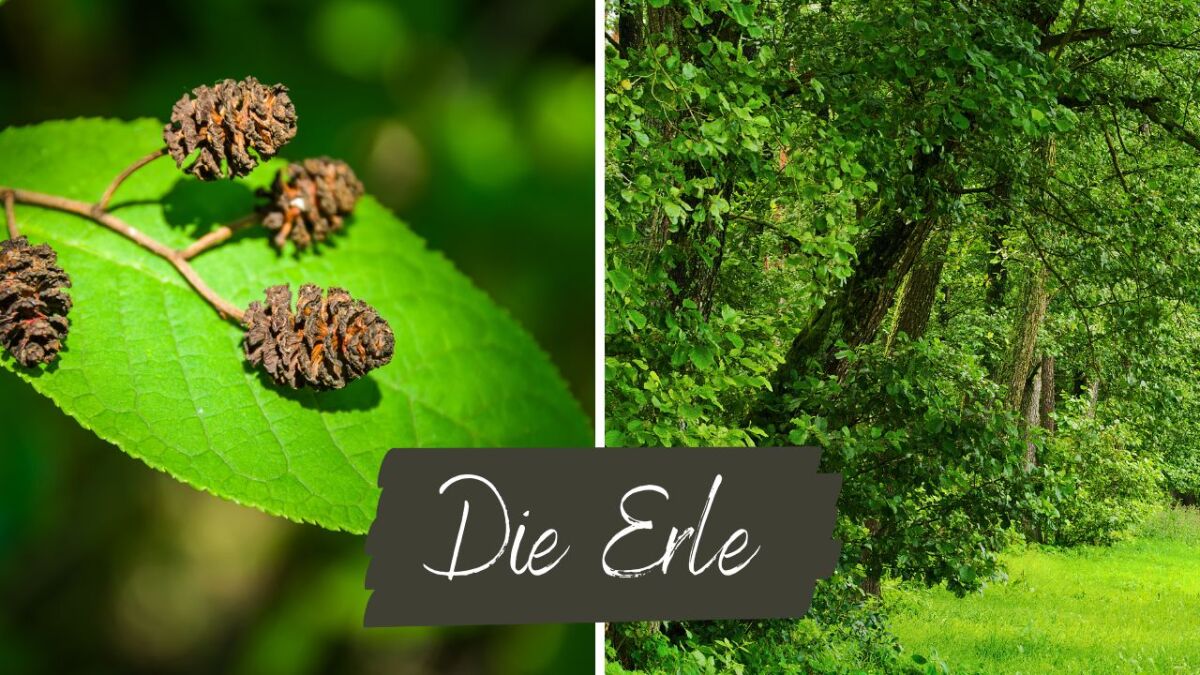
The Alder tree has a rather extraordinary function: It can clean the soil and restore the balance.
What it does for the ecosystem of its region also affects humans. For us, this means that the Alder tree can restore our inner balance and equilibrium.
From a medical perspective, Alder tea has an astringent effect (anti-inflammatory) on our body and can be applied externally as well as internally.
Alder tree helps with skin rashes, itching, and inflammation of the skin and can be applied as a tincture or directly as a poultice.
2. The all-rounder apple tree
The apple tree is not just any fruit tree. From a medical perspective, the apple can do much more than just provide us with delicious and healthy fruit.
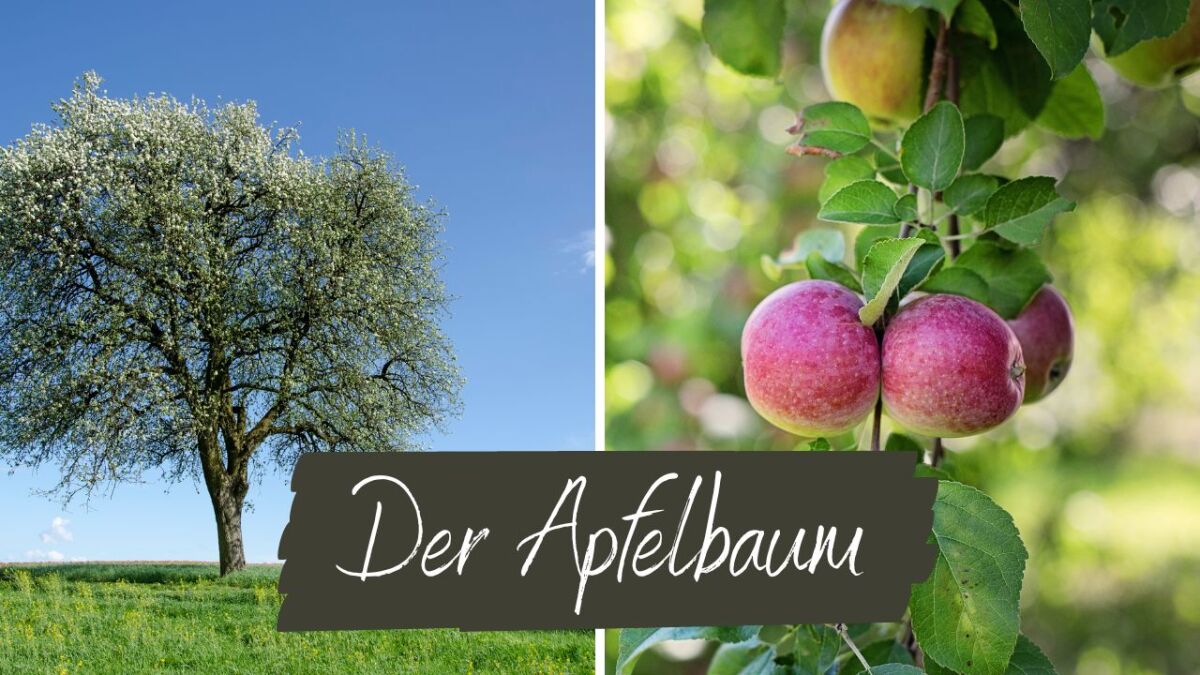
Pectin is contained in apples. It is mainly found in the skin, which is why it can be processed into tea, causing a variety of positive effects.
The bark of the roots and the apple skin help with inflammation and reduce fever.
Apple juice extracted from the fruit can be processed into apple cider vinegar. This in turn has a positive effect on the intestinal flora and thus on intestinal health.
Apples help against diarrhea and support weight loss. And apple cider vinegar soothes the skin and, when used as a rinse, makes your hair shine. It also helps against excess greasiness of the hair.
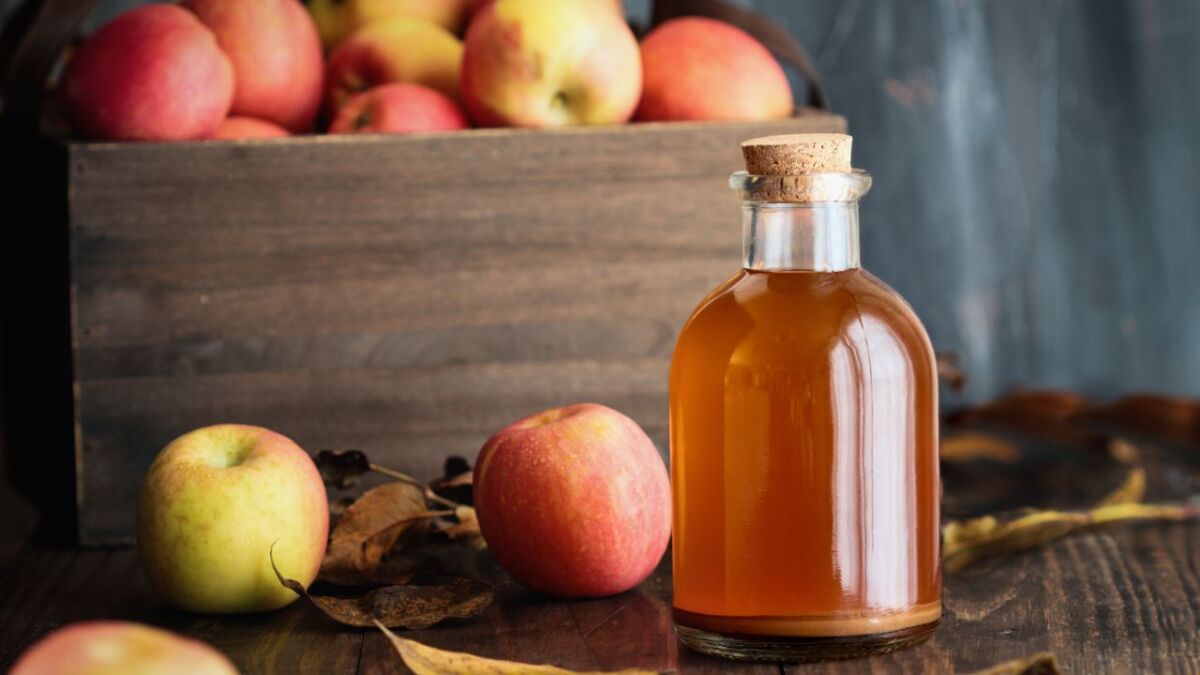
Apples are good for the skin. The pectin in the skin regulates sebum production in the skin and thus affects the complexion.
In addition, the filling effect naturally smoothes out first wrinkles. To achieve this, rub your face once a day with an apple slice, leave it on for about 10 minutes, and then rinse it off with lukewarm water.
3. The Ash Tree, the World Tree
This is the protective tree of the ancient Germans, and our ancestors knew how far-reaching its healing effects are.
The ash tree stands for balance and harmony and, according to old beliefs, protects its children from danger.
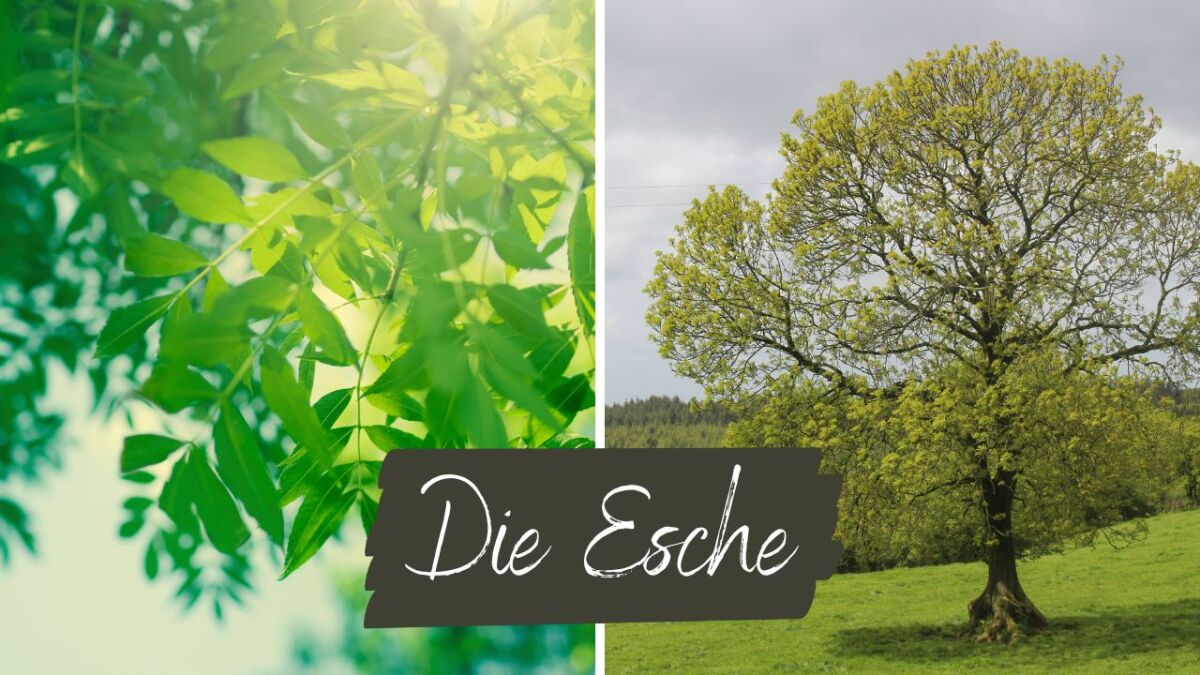
Ash trees can become ancient. In parks, they are among the tallest trees, next to the plane trees. However, ash trees are not just ornamental trees.
A tea is made from the fresh greenery in spring, which relieves the symptoms of rheumatism and gout. The flavonoids, triterpenes, and coumarin contained in the bark and leaves are known to have anti-inflammatory and pain-relieving effects.
Another example of the effects of the ash tree is its diuretic properties. Thus, it offers its supportive effects in detoxifying heavy metals and toxins.
The fruits of the ash tree are edible winged nuts, and its trunk can be tapped for sap in early spring.
4. The Birch, the Survival Tree
For me personally, the most versatile tree in the forest and meadow. The birch with its white bark is unmistakable, and at least here in our country, there are few trees that can compare with it.
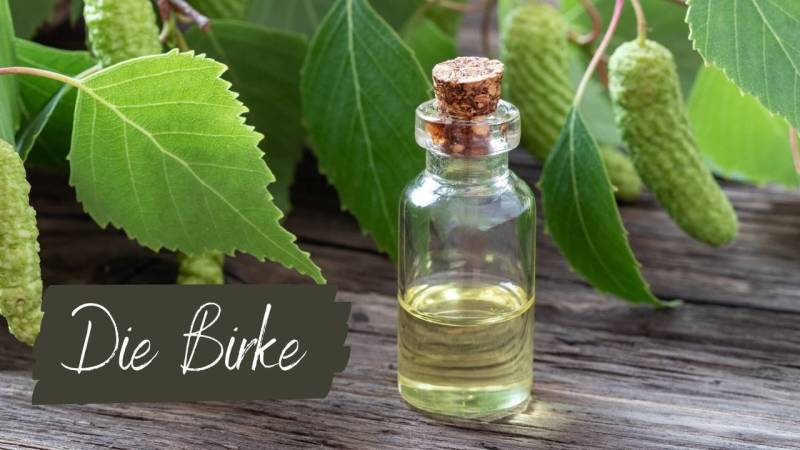
The birchbark alone is a fantastic survival material. Here's what you can do with it:
- You can peel off the parchment-like outer dead bark and use it to start a fire. The essential oils in the bark burn perfectly. You ignite it with a fire steel. If you're looking for a good fire starter, refer to my top list.
- You can make vessels, such as small boxes or even containers in which you can cook, out of the sturdy bark of birchbark. Here's a guide.
- You can make a kind of birch spaghetti from the juicy inner bark of live trees.
- If you puncture the bark with a small hole, you can obtain birch water in the spring. It's somewhat sweet and delicious.
I've written even more about birchbark as a survival wonder in my guide here.
You may already know that the birch poly pore (a fungus) grows on dead trunks. This fungus acts as an antiseptic, antibiotic, and it stops bleeding. You can use it as tea, tinder, or even as a bandage. You can find the complete guide to birch polyp ore here.
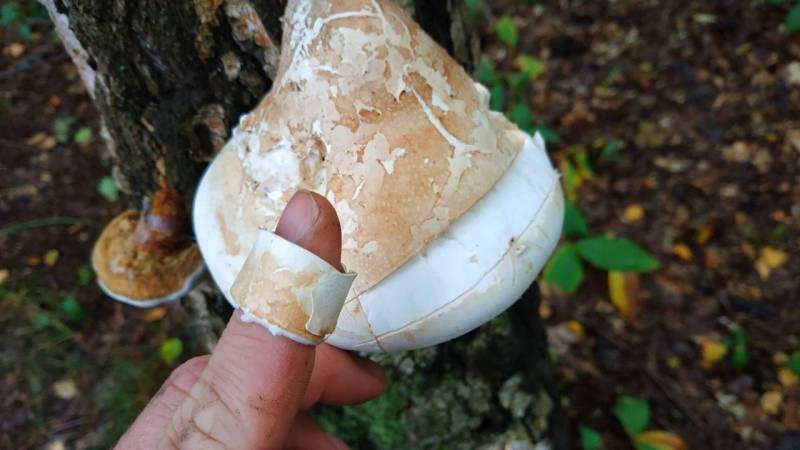
I'd also like to mention some lesser-known abilities of this tree.
The sap of the birch is rich in protein and vitamins. It also contains important minerals for your hair, bones, and strengthens your immune system.
You can boil a tea from the young leaves of the birch, which can help you if you have problems with your stomach/intestinal tract. Its gentle laxative effect is better than that of a medication with 20 side effects.
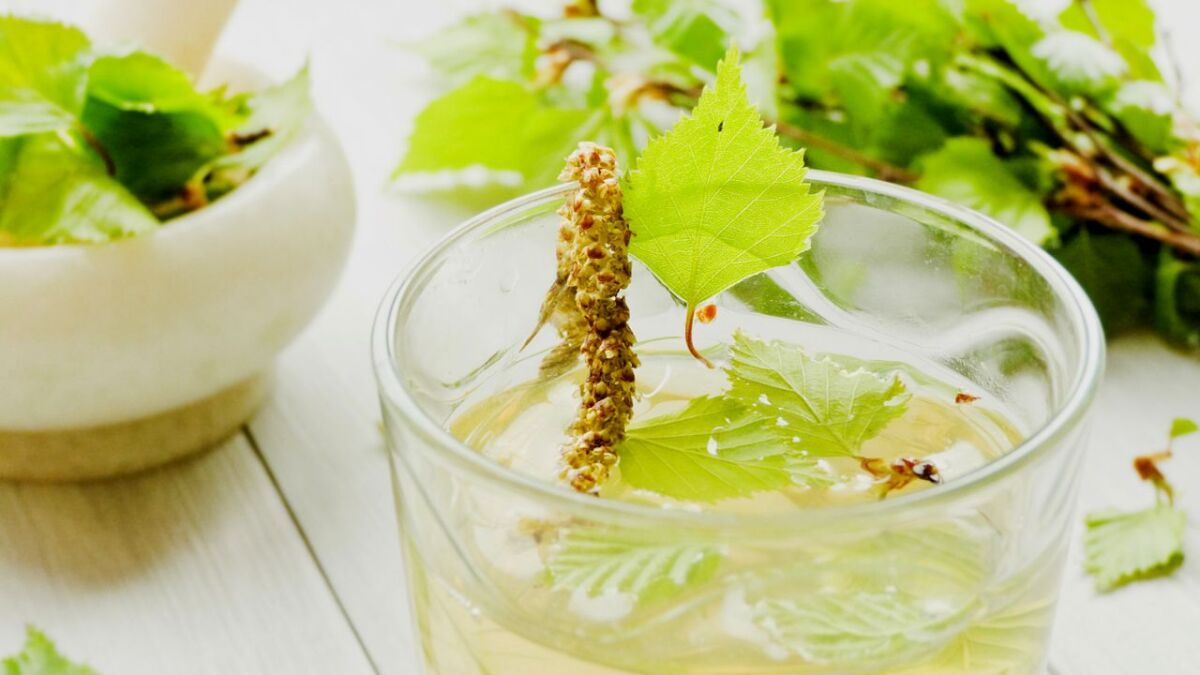
Birch tea also works great for rinsing small wounds, during dental surgery, or other injuries in the mouth.
The birch is also very effective when applied externally. For example, a tea made from bark and leaves can help relieve symptoms and itching of psoriasis and eczema.
5. Elderberry, an ancient medicinal plant
I love the scent of elder flowers in spring. When its white flower plates with tiny open flowers reach towards the sun, it's harvest time. You can dry them or make fragrant liqueur, or simply turn them into honey.
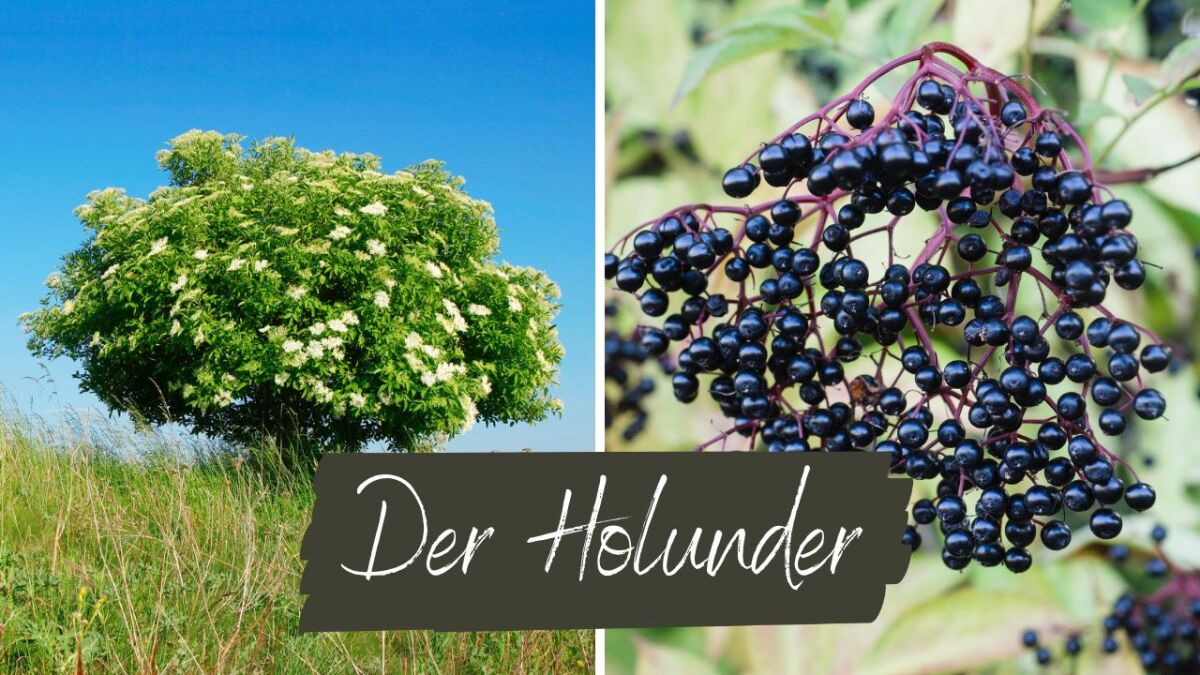
Elderberry, or simply elder, is known for its healing effects beyond the borders of Europe. Here in our region, it has been considered a medicinal plant since ancient times, capable of curing all sorts of ailments.
When struggling with respiratory or lung problems, elderberry can aid in a faster recovery. It is anti-inflammatory, fever-reducing, and gentle on the stomach.
Its leaves can be used for external application by placing them as a poultice on small wounds to promote healing and prevent inflammation. Elderberry tea can be freeing and soothing for the throat and lungs.
In summer, the black/red berries contain a high dose of vitamin C, which makes the Elderberry a strengthening plant for your immune system.
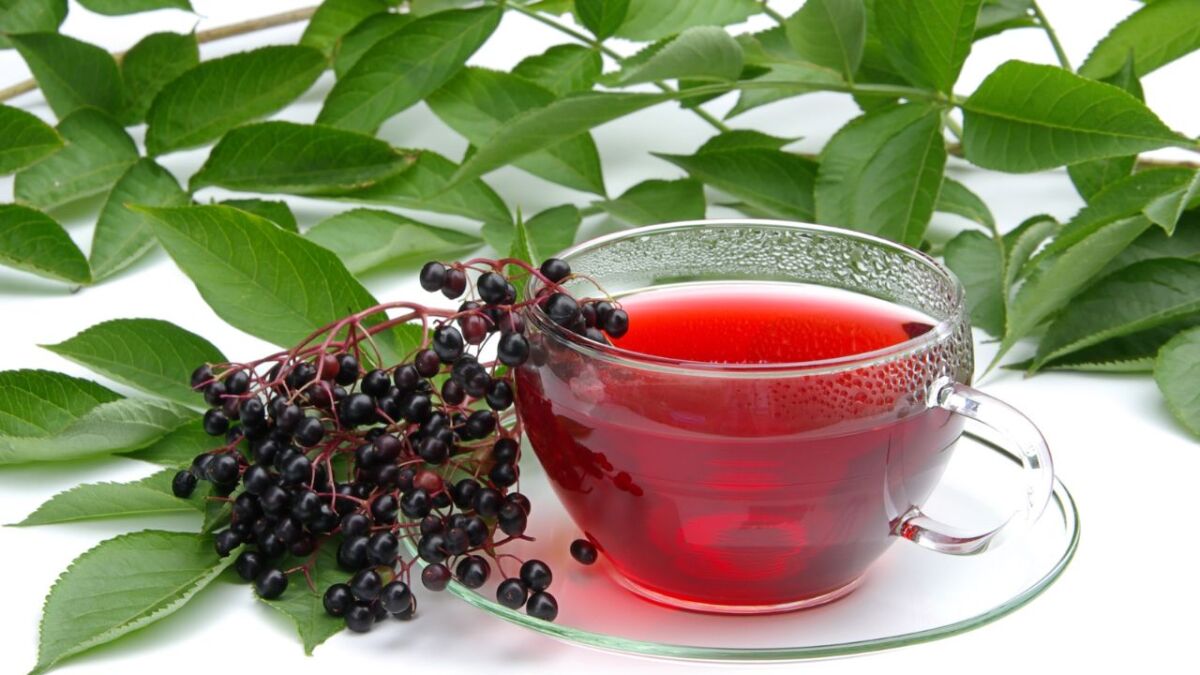
However, kindly note that the berries are toxic to the gastrointestinal tract in large quantities when consumed raw. If you eat only a few berries, and have no allergies, nothing should happen. To be on the safe side, you should always cook the berries.
When processed into juice or jelly, you can benefit all winter from the immune-strengthening effects of the Elderberry.
6. The Rowan Tree - The Tree of the Thunder God
The Rowan tree is one of the healers surrounded by numerous myths. It is particularly dedicated to the Thunder God, Thor.
Our ancestors believed that hanging a branch of the Rowan tree on the roof or window would prevent lightning from striking the house. With houses being struck by lightning so rarely, it's no wonder they believed in the result.
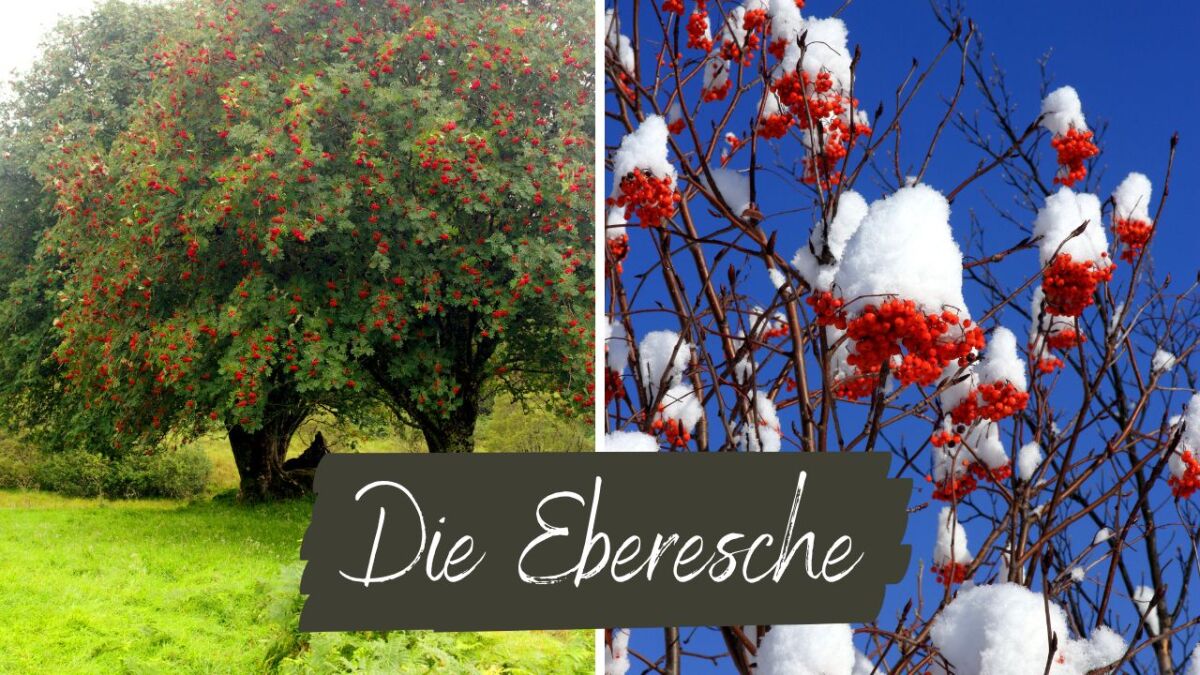
A myth is that the Rowan tree or Mountain Ash is toxic. Jam made from Rowan berries is rich in vitamins and minerals, particularly vitamin C, which is why it is also called the "Bird berry". The brightly orange colored berries provide birds with essential vitamins for the cold season until early winter.
The leaves and bark of the Rowan tree are also used for external application and have anti-inflammatory effects.
Although the Rowan tree has almost identical leaves to the common ash tree, it does not belong to the same genus. It owes its name only to the similarity.
7. Under the Linden Tree
Another old healing tree is the lime tree. Lime flowers are preferred in herbal teas or used pure. There, they work against colds and relieve inflammation of the upper respiratory tract.

But not only the flowers of the lime tree are usable, but also the leaves and bark and even the buds of the tree are used in medicine.
In May, when the lime tree blooms, you collect and dry the flowers and leaves. This way, you preserve them for autumn or winter, when flu and the like make people sneeze and cough again.
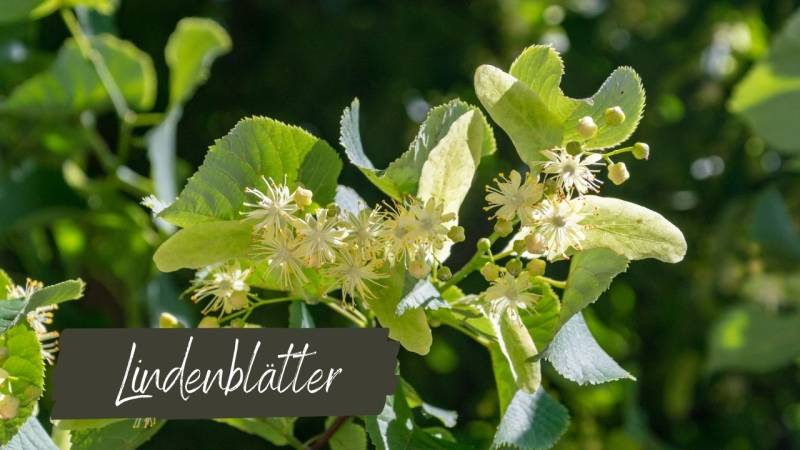
All mentioned parts have a calming effect on the mucous membranes. Both the nasal and throat area, as well as your gastric mucosa, benefit from it. A calming effect is also attributed to it with regards to the nerves. Therefore, the lime flower is almost always part of calming teas.
The small spherical fruits of the lime tree are oily. You can eat them in their early stage or peel them later after maturity and use them as a small topping on your salad.
8. The Hawthorn – for a strong heart
Active older people swear by the strengthening power of the hawthorn. Its healing power was already known to Hildegard of Bingen and its reputation for strengthening internal organs, especially the heart, is more than justified.
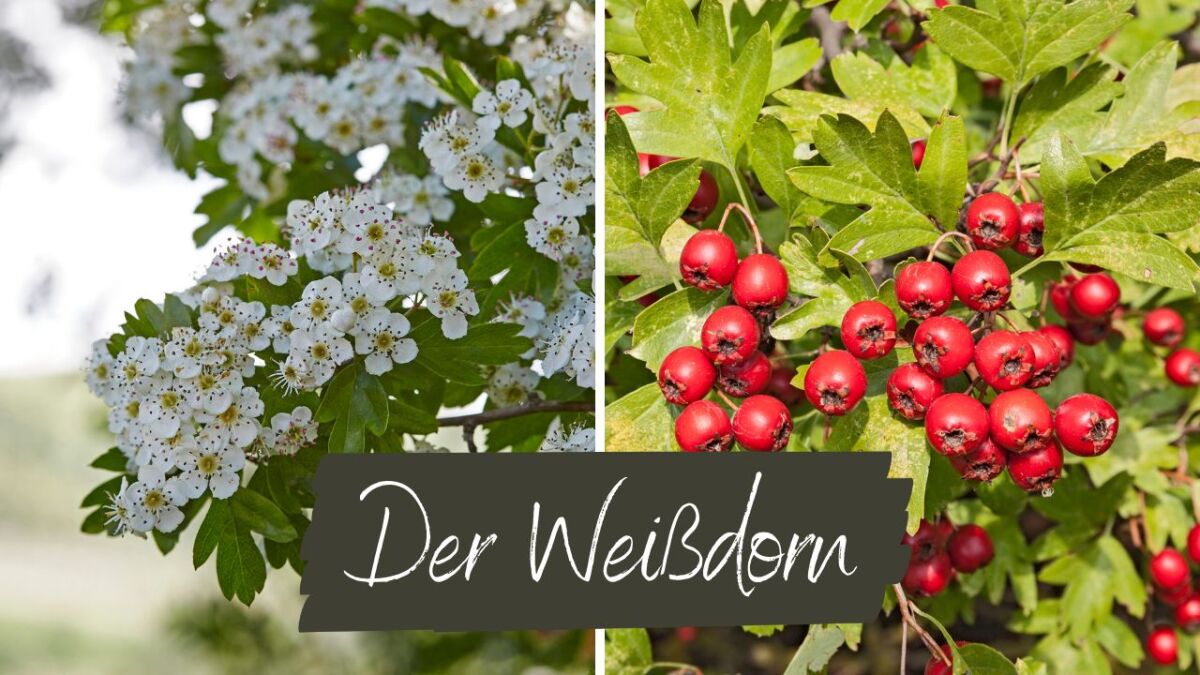
The fruits of the hawthorn are brightly red and inside a floury-mushy consistency. They contain vitamin C, calcium, and vitamin A.
Since they have no significant taste of their own, it is always advantageous to mix them with rose hip or another forest fruit of your choice when processing them into jam or purée.
Hawthorn also works against several other ailments, such as circulatory problems, headaches, high blood pressure, and heart rhythm disorders. It also has a sweat-inducing and fever-reducing effect.
You can purchase hawthorn in capsule form or as a powder at the pharmacy, or you can make the latter yourself by drying and grinding the fruit. However, remove the seeds, as hawthorn is a rose family plant that contains cyanide in the seeds, which should not be consumed raw in large quantities.
9. Hazelnut
Who would have thought? Thanks to some lesser-known properties, the hazelnut is one of our 18 healing trees.
The nuts are delicious and full of healthy fats and vitamins, but they are not the only thing the hazel has to offer.
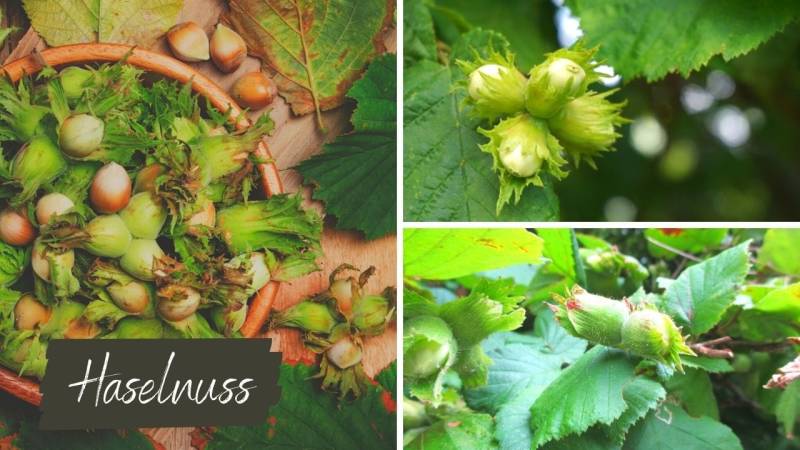
A tea made from hazelnut bark lowers fever similar to willow bark, but does not have its pain-relieving properties.
You can also create a brew from the bark that, when applied topically, alleviates wounds and skin diseases (Read here more about skin care in the wilderness).
Like its predecessor, hawthorn, hazelnut is said to have a heart-strengthening effect. This should be of particular interest to older people as it counteracts arteriosclerosis.
10. Cedar for the respiratory system
Now, let's move on to one of the few conifers in the lineup of healing trees. Like almost all conifers, cedar is primarily used in cold medicine.
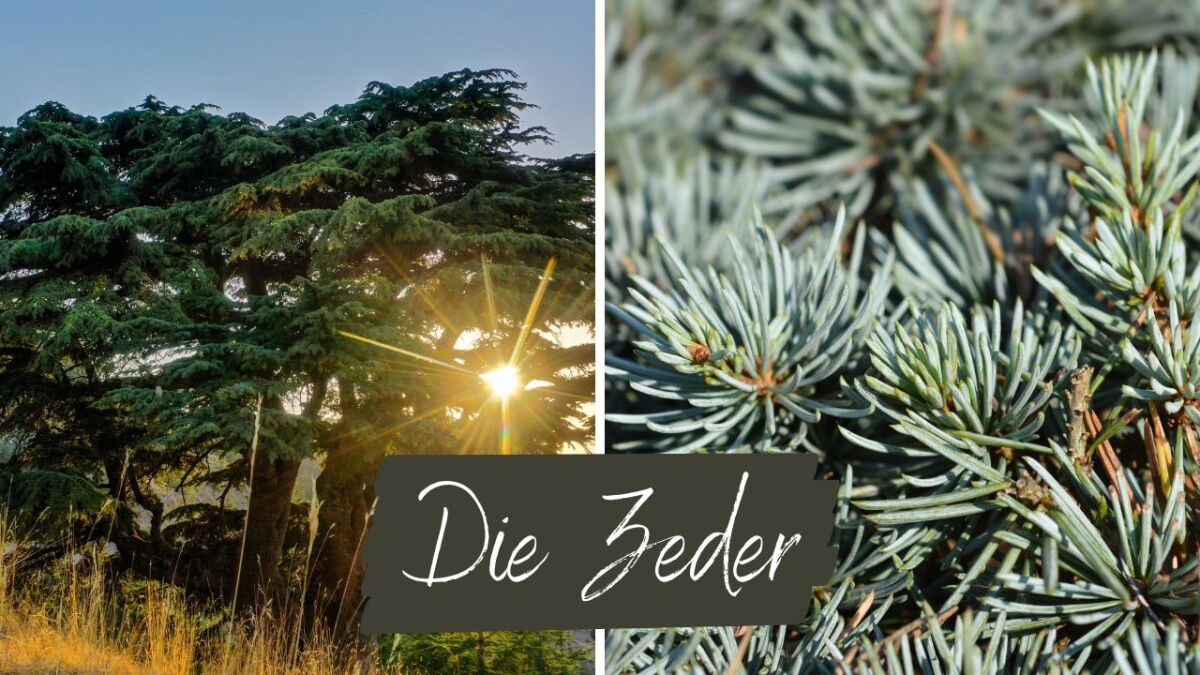
Stimulating blood flow and full of essential oils, the cedar contributes to relaxation and relieving upper respiratory tract issues when added to a full bath. Its oil relaxes muscles, invigorates tired feet, and smells so great of conifers that it also has a positive effect on the mind and nerves.
You can burn the needles, make oil extracts, or add them to your bath or hot water to inhale.
In skin balm, it acts liberating on the lower respiratory tract and nasal sinuses. Cedar needle tea warms you from the inside and helps with chills during flu symptoms.
11. The Willow - Tree of Two Worlds
Willows are among my favorite trees. I like to sit under a willow by a stream, watching as the wind gently moves its branches and everything seems somewhat incredibly peaceful. Willows bring your emotional balance into alignment, slow you down, and offer you peace.
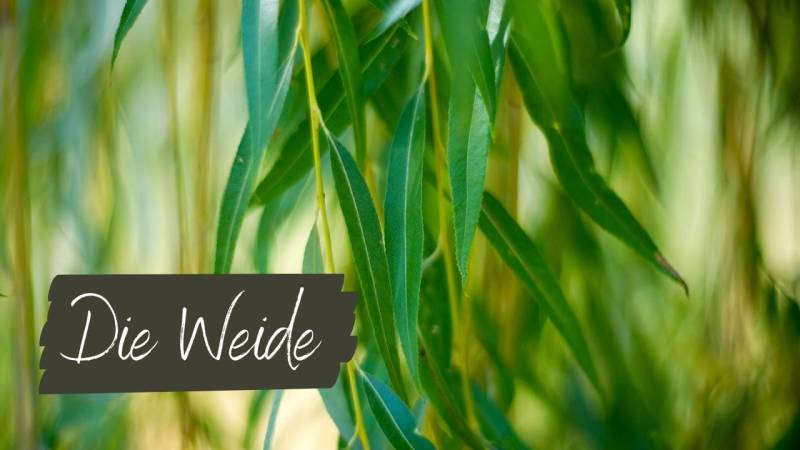
For roughly 3,500 years, willows have been known for their calming effect on people. They have been valued for their healing and pain-relieving properties. But there is so much more that you might not know about them.
In the psychological as well as in the physical world, it helps keep your mind and body healthy. Its properties as a healing tree are due to the active ingredients within it.
Salicylic acid, for example, is the basis for aspirin. A tea made from dried willow bark relieves headaches and lowers fever.
In early spring, when the bark is still bitter, the concentration of the active ingredient is highest. In general, with willows, the finer, and longer the branches and leaves are, the higher the healing effect.
As a herbal remedy, it can also be used to treat rheumatism, gout, and other inflammatory conditions.
In addition to its medicinal effect, the willow tree is also known for bringing peace and serenity. Its branches are often draped around sacred places to protect them from negative energy or misfortune.
Its leaves are also believed to carry positive energy that brings luck. The willow tree has long been associated with rebirth and renewal, as it often regenerates after being cut down or damaged. In light of this, it is considered particularly helpful during times of transition or crisis.
Among the native species here, the best-known willows with these characteristics are the white willow and the weeping willow.
12. The Poplar - Balm for the Soul
Similar to the willow, the active ingredient in the poplar is mainly found in the bark. Thanks to similar ingredients, it can also reduce pain and has a regulating effect on the body temperature. A tea made from poplar bark also has a blood-thinning effect.
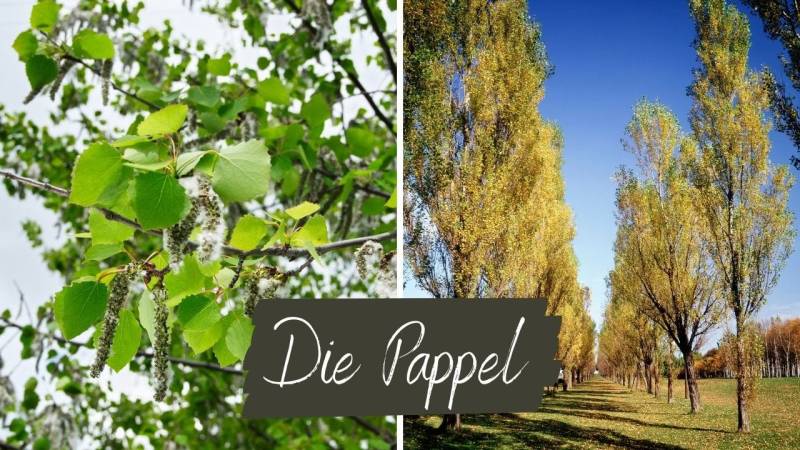
It is also successfully used in the treatment of breast congestion, which is a mucous disease of the upper respiratory tract. In general, its tea helps with colds and sore throats.
A salve can be made from the buds in spring that helps with burns, inflammation, and promotes better hair growth.
Poplars, depending on the species, can reach a good height and are often planted as field boundary trees due to their slender shape and flexibility.
Very impressive and widespread across Europe, the silver poplar is known for its brightly shining bark and silvery underside of its leaves. Once the pollen is released from the silver poplar, the white fluff covers entire parks and roads.
13. The Walnut - A Power Nut
The walnut tree is one of the oldest and most highly regarded trees for its medicinal properties. For centuries, people have used the nuts, bark, leaves, and oils of this tree to treat a variety of illnesses.
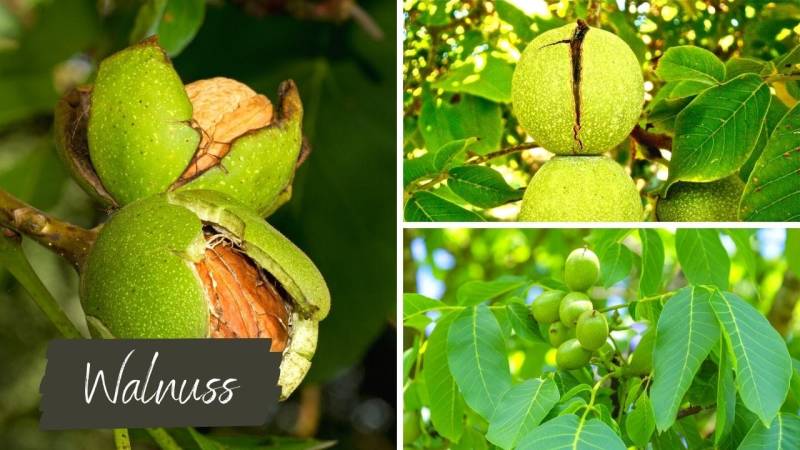
Walnuts are known to help alleviate digestive issues like constipation and diarrhea, and also have anti-inflammatory properties. Additionally, walnuts are rich in antioxidants, which can help reduce oxidative stress in the body.
Walnuts also provide cardiovascular benefits. Studies have indicated that consuming walnuts can lower cholesterol levels and improve blood pressure. They are also a great source of Omega-3 fatty acids, which can help reduce risk factors for heart disease.
Because of their high content of polyphenols and other compounds that act as antioxidants, walnuts can even help reduce the risk of certain types of cancer.
Given that they are filling and satisfying, you may want to think about how to incorporate walnuts into your diet in the long term.
There are many other uses for the walnut tree, including use in skin care products, aromatherapy, hair care products, and even to protect wooden furniture from termites and beetles. As you can see, this healing tree has much more to offer than just its tasty nuts.
14. The Pine – Settled in the Far North
Another helpful tree when it comes to health is the pine. It has similar applications as cedar and is often used in teas, ointments, and inhalation oils to treat upper respiratory tract infections.
The pine also contains strong essential oils that have a calming and relaxing effect. That's why you can find the scent of pine and fir in many over-the-counter cold remedies.

Pine oil, extracted from pine needles, contains a high number of antioxidants that can protect cells from damage and slow down aging. Additionally, pine oil has a natural detoxifying function that helps the body eliminate toxins and waste products more quickly.
Pine tea is made from boiled pine needles and branches and can be used to treat various ailments such as cold and flu symptoms, congested chest, headaches, sore throat, digestive problems, and even arthritis.
The pine can be recognized by its sometimes curious branch shapes, depending on its location. It also grows well on rocky terrain and has a reddish-brown bark that peels in layers. Additionally, it is considered one of the indicator trees for porcine mushrooms.
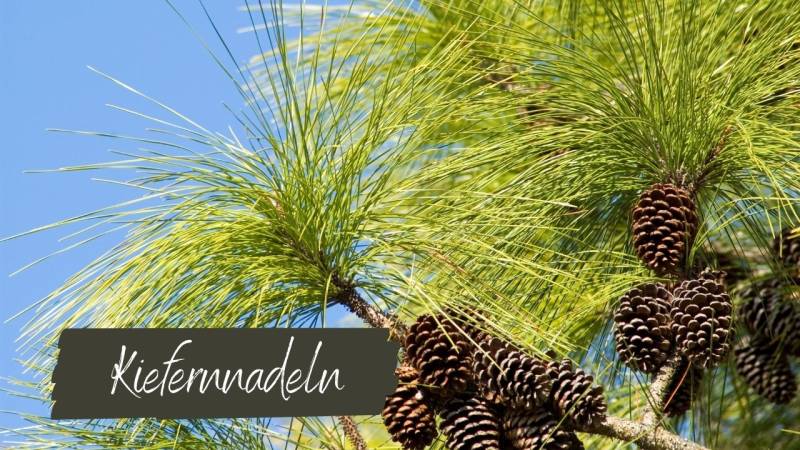
To relieve muscle and nerve pain, a full bath with pine needle oil has also been found to be effective. Add 5 grams of the oil to the bath water and soak in the solution for 15 minutes - this will provide pain relief and improve circulation.
The resin from the pine is strongly scented, has an antiseptic and antiviral effect, and can be chewed like gum to help with gum inflammation. Of course, it can also be used dried for smudging and for making pine tar ointment, which also has anti-inflammatory and wound healing properties.
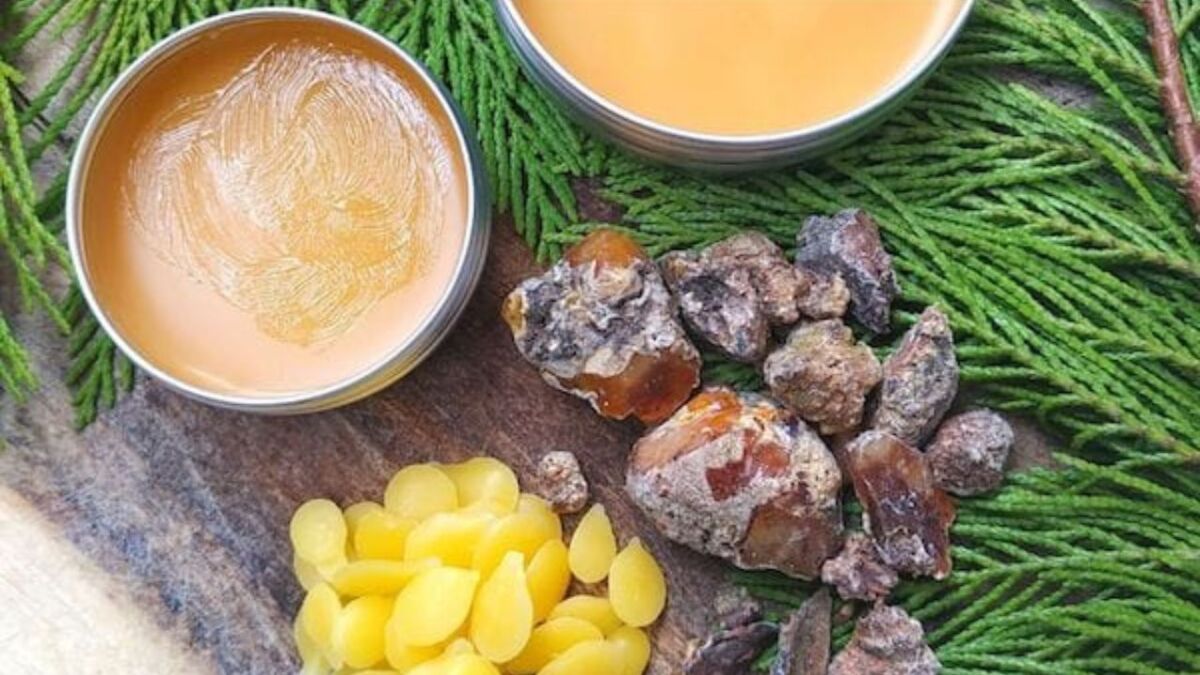
It is also known that inhaling the scent of pine can reduce stress and anxiety due to its soothing effect on the mind. Overall, the pine tree has long been attributed with strong healing powers that can provide relief for many conditions.
Also read
16 ways resin can help you in the wild - There are countless different way's resin can be useful and applied in a survival situation in nature.
15. The Maple - the symbol of Canada
The maple tree has long been known for its healing properties. It is an ancient symbol of strength, vitality, and longevity.
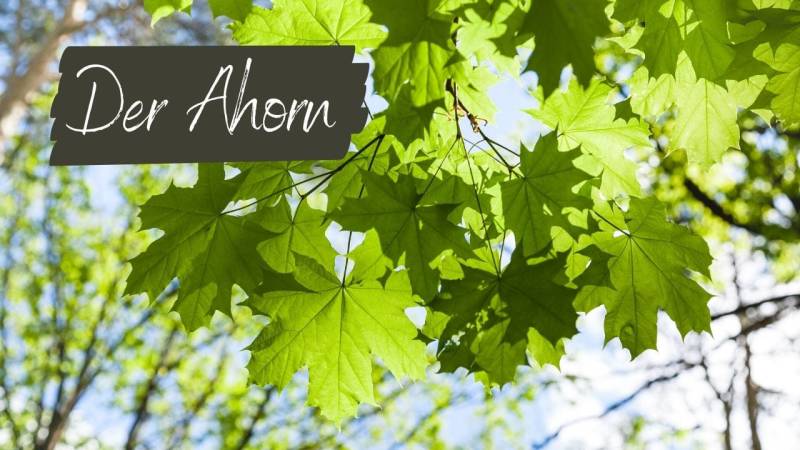
I already wrote about this maple tree in a previous article. It is not actually native here, but has been introduced due to increasing popularity in landscape gardens.
The sugar maple is the species with the highest sugar content in its sap, and is therefore mainly used for original Canadian maple syrup. The sap of the maple tree contains a range of antioxidants, minerals, vitamins, and other beneficial compounds that can support overall health and well-being.
Also read
The Liquid Gold of Trees: 16 Trees You Can Tap for Syrup - Syrup from nature - doesn't that sound tempting? In this guide, you'll learn how to extract valuable and delicious syrup from 16 different trees.
The leaves of the maple tree are also used in traditional herbal medicine and can be brewed into a tea that is said to be anti-inflammatory, circulation-enhancing, immune-boosting and even digestion-promoting.
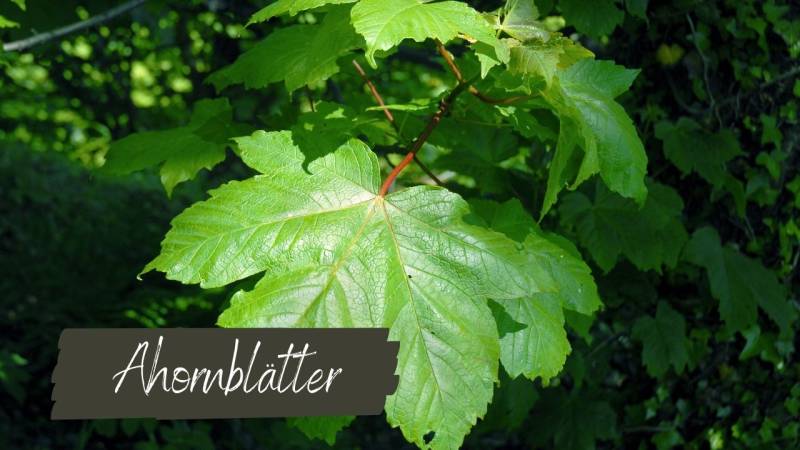
Like all plants in the soap berry family, it contains saponins and flavonoids. Additionally, the leaves and syrup are rich in potassium, magnesium, iron, and calcium.
If you come across maple seedlings in the early spring while in the forest, you can use them in salads just like beech seedlings and benefit from these small vitality bombs.
In addition to its medicinal properties, the maple tree is also ascribed many spiritual meanings, including renewal, protection, fertility, and abundance.
Also read
How to distinguish sycamore maple, mountain maple, and field maple (with pictures of leaves) - In this guide, you will learn how to distinguish sycamore, mountain, and field maple based on their leaves in just a few seconds using pictures and memory aids.
16. The Douglas Fir - The Lemon of the Forest
The Douglas fir is known for its medicinal properties and has been used for centuries to treat a variety of ailments.
Due to its numerous healing properties, it is one of the most commonly used trees in traditional medicine. The leaves, bark, and needles of the tree contain natural compounds that aid in wound healing, reduce inflammation, and can even act as an antiseptic.
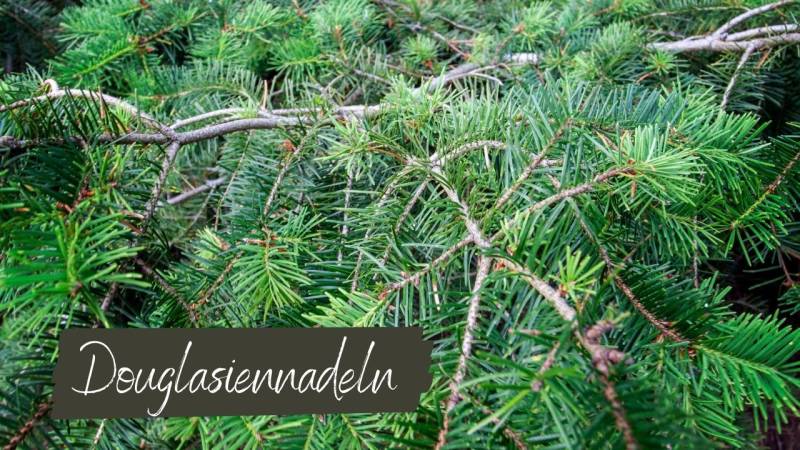
The oils obtained from the needles can be used to treat muscle and back pain.
The oils from Douglas fir needles can also be absorbed through eating or taking a bath. You can chop the needles finely and add them to butter or put them in your bath water. My preference is to make a tea from Douglas fir needles, which has a refreshing lemon flavor.
Research is continuing on how the properties of the tree can benefit people with more serious illnesses such as cancer and diabetes. All in all, the Douglas fir is a powerful medical resource with many potential healing effects.
17. The Mystical Oak
The oak tree, the holiest tree of our ancestors, sung about in the Eddas (Scandinavian myths) and praised in poetry time and time again. According to tradition, the oak tree promotes a clear mind.
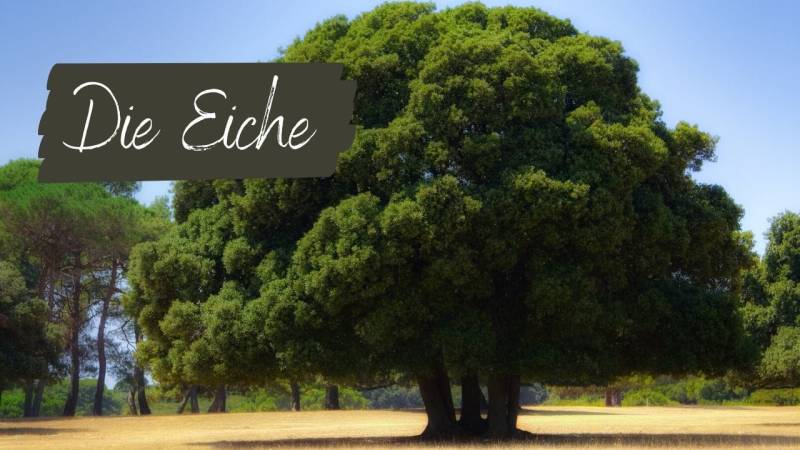
Its leaves and bark have antiviral and antibacterial effects. The tannins (The bark is used for tanning animal hides), which are less concentrated in the leaves than in the fruits, make it effective against diarrheal diseases and inflammation of the gastrointestinal tract when used in a tea. It can also be used to treat inflammation of the oral mucosa. When used topically, the tea can treat skin inflammations, eczema, and abrasions. The oak is a symbol of strength and connection to ancient beliefs and gods.
As Christianity spread throughout Europe, entire oak groves were burned down in the hope that this chapter of "idol worship" would disappear on its own. However, this turned out to be wishful thinking, as such beliefs have persisted in many regions until now.
18. The Elm
The last tree that I would like to recommend for medicinal purposes is the elm. In the past, this tree, with its leaves reminiscent of beech leaves, was widespread. Nowadays, it has become quite rare due to environmental pollution and parasites, to which the elm is very sensitive.
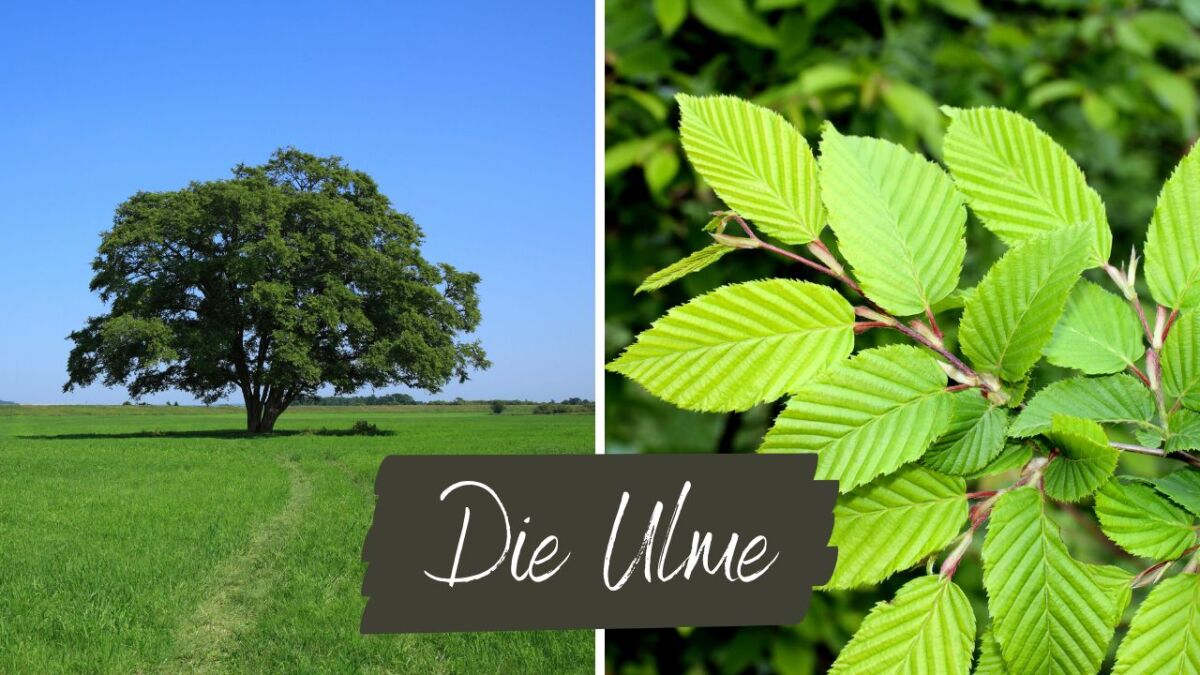
The elm is attributed with noble qualities because it always does everything fairly, not robbing other plants of light or taking up too much space and hindering their growth. It is also known as the tree of intuition.
The most traditional way to use elm is by making tea from the bark. The bark has astringent and anti-inflammatory effects, and contains tannins and gallic acid, mucilage, flavonoids, bitter substances and resin.
Used for healing purposes, the elm can help with the following ailments.
- A tea made from the leaves and bark relieves coughs and hoarseness due to its antiviral properties.
- It can also be used externally for gout and inflammation.
- Used externally for acne and skin conditions, pimples, oily skin, skin blemishes, blackheads, eczema.
Attention, the elm is unfortunately disappearing more and more from our forests, so please do not simply remove the bark, but think twice about whether it is necessary. You can also buy elm bark.
Conclusion: Not only, our indigenous medicinal herbs offer you a comprehensive natural pharmacy
Supplemented with our deciduous and coniferous forest, the spectrum is expanded in an optimal way.
You just have to know what you can use for what purpose and stock up and preserve accordingly to benefit from it.
If I could recommend something to you in this article that you didn't know before, then the effort was worth it and the long text served its purpose.
Use the power of the trees!

Sources for the guide
https://heilkraeuter.de/lexikon/ulme.htm
https://www.klein-naturarznei.de/kraeuterlexikon/weissdorn.html
https://www.plantura.garden/gehoelze/eberesche/vogelbeeren
https://www.apotheken-umschau.de/medikamente/heilpflanzen/schwarzer-holunder-traditionelles-mittel-bei-erkaeltung-733377.html
https://www.baumpflegeportal.de/aktuell/heilkunde-ahorn/
https://www.lwf.bayern.de/wissenstransfer/forstliche-informationsarbeit/140663/index.php
https://bionorica.de/de/gesundheit/heilpflanzen/weide.html
https://www.apotheken.de/alternativmedizin/heilpflanzen/12728-pappel

Author of the guide
Martin Gebhardt
Hey, I'm Martin. On my blog, you will learn the basics and numerous details about living in the wild. I think survival, bushcraft and the good life in nature are the keys to happiness. Find me here on Instagram or on YouTube. You can find more about my mission on the About Me page.
Was this guide helpful?
65 people found this guide helpful.
5.00 out of 5 points (65 Ratings)
Comments (0)
This post may contain affiliate links. So if you click on the links and make a purchase, I will receive a small commission at no additional cost to you. Click here, to learn more about it.



